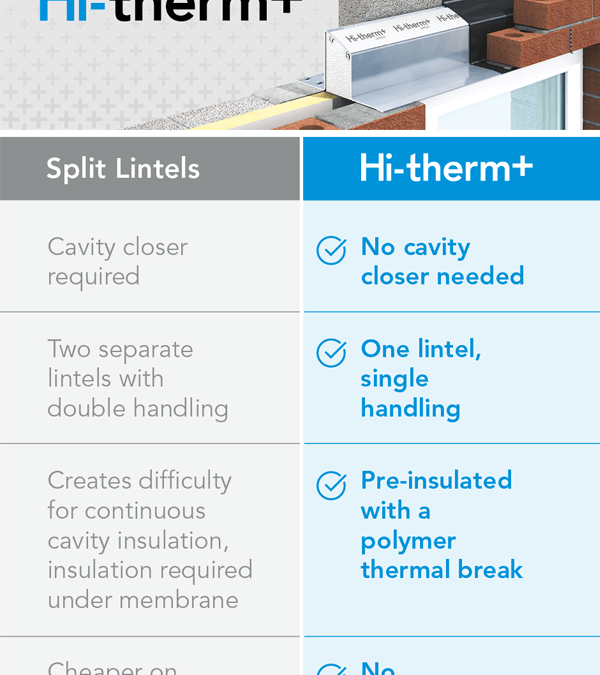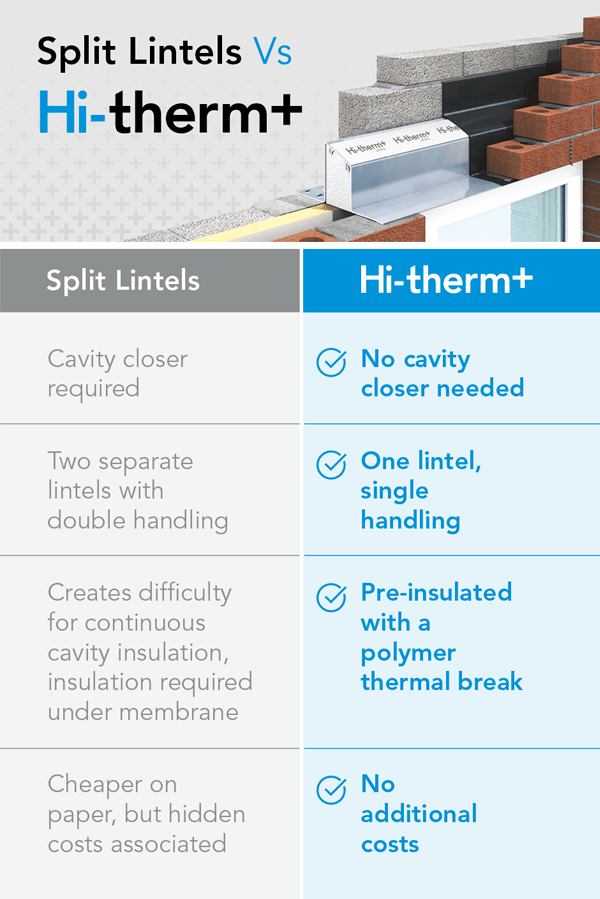Cold bridging was once regarded as an unavoidable factor in construction, but when we look at how to conserve more heat, lintels can be identified as the largest non-repeating source of cold bridging.
Not only have building designers started looking at ways of tackling this in order to avoid heat loss and condensation around windows, they are also concerned with reducing cold bridging to improve SAP calculations in order to have more freedom elsewhere with larger windows and doors.
One solution being employed to reduce cold bridging is to separate the inner leaf of the cavity wall from the outer by installing two separate lintels. Another way of doing it is to install a one piece Keystone Hi-therm+ lintel, which has a polymer thermal break.
What are split lintels?
A two piece or split lintel is essentially an angle style lintel supporting the outer leaf, with a box style lintel supporting the inner leaf. Many two piece lintels have a requirement to be propped for several days while the brickwork above sets. Extra cavity wall ties in the brickwork above the lintel are advised to tie both leaves of the wall together. To ensure the insulation is continued all the way down to the cavity closer, it is necessary to cut a piece of insulation to go up under the dpc membrane. This detailing is difficult and cumbersome on site and quality control issues can occur.
What is Hi-therm+?
The Hi-therm+ lintel is a one piece ‘top hat’ style lintel, similar to a standard steel lintel except that it is up to 5 times more thermally efficient. The Hi-therm+ lintel, using patented innovative technology, introduces a polymer element into a traditional steel lintel. This creates a powerful thermal break which dramatically reduces thermal bridging through the junction with beneficial cost and performance outcomes.
The benefit of a one piece lintel over an opening in a cavity wall is that it provides enhanced structural integrity to the wall. Moreover, the resulting improvement in Psi value is considerable with figures of between 0.03 – 0.06 W/m.k to be expected depending on the specific wall make up.
Hi-therm+ costs marginally more than using the two-piece lintel, but not very much more, and that small extra cost is more than covered by the time savings, not to mention the hassle you save. All of the extra requirements that come along with split lintels need extra labour, which then makes the split lintel a more expensive option than Hi-therm+.
Have a look at the infographic below for a brief overview of the differences between Hi-therm+ and split lintels.


